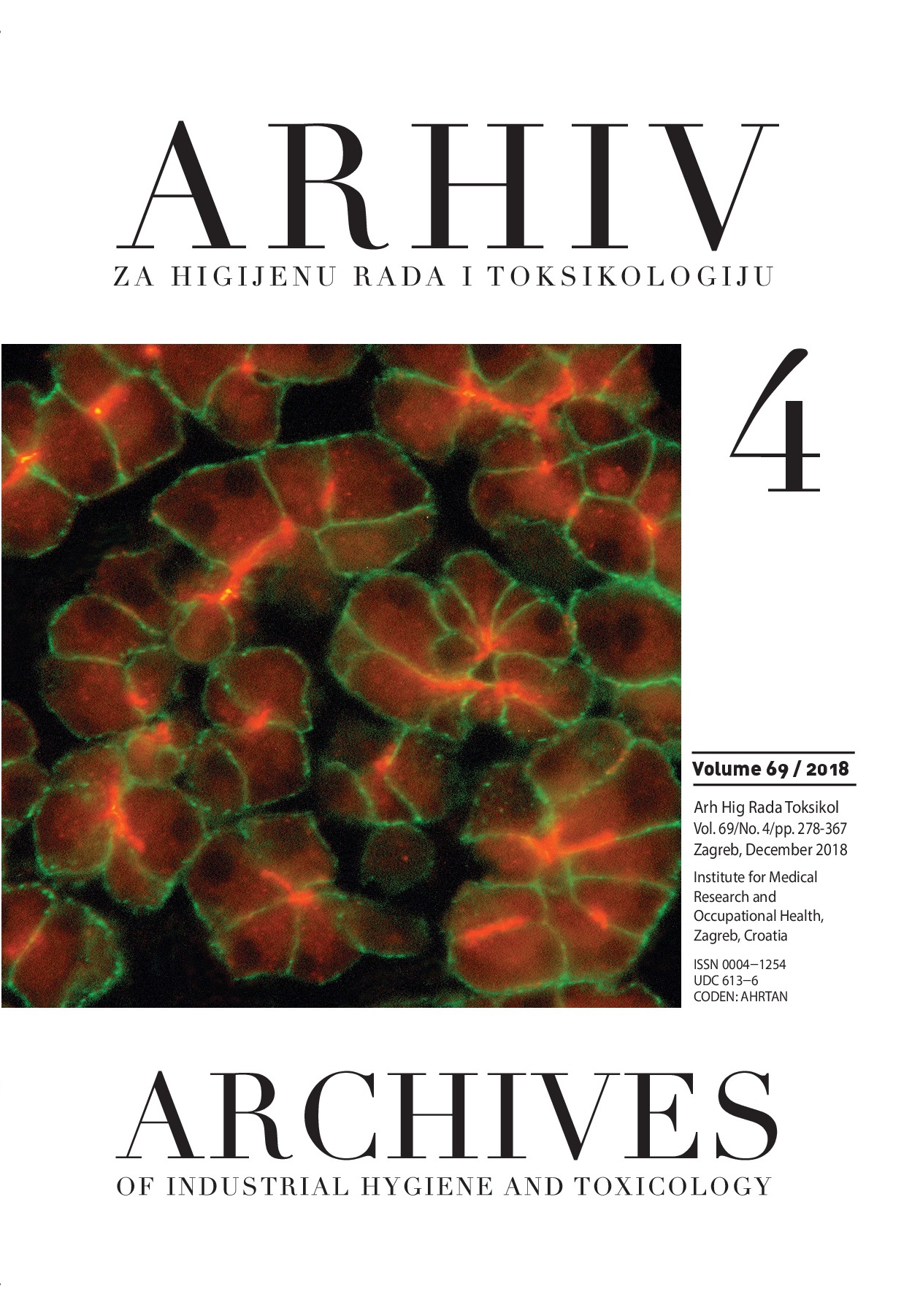Organic dust exposure in veterinary clinics: a case study of a small-animal practice in Portugal
DOI:
https://doi.org/10.2478/aiht-2018-69-3171Keywords:
Aspergillus, azole resistance, bioburden, particles, Staphylococcus aureusAbstract
Literature about occupational health in small-animal veterinary practices is scarce, but most of it has recognised a number of risks to be considered, including organic dust exposure. The aim of this pilot study was to assess organic dust, bacterial, and fungal contamination in the indoor environment of a typical Portuguese veterinary clinic but also to screen for azole-resistant fungi. To complement these findings we also analysed workers' nasal exudates for resistant bacteriota. Particles measurements included mass concentrations (PMC) of five particle sizes (PM0.5, PM1, PM2.5, PM5, PM10) and their counts (PNC). Indoor air samples were obtained from six locations as well as before and during cat dental cleaning and cultured on four media for bacterial and fungal assessment. An outdoor sample was also collected for reference Surface samples were taken from the same indoor locations using swabs and we also use electrostatic dust cloths as passive methods. PM10 showed the highest concentrations across the locations. Indoor air fungal loads ranged from 88 to 504 CFU m−3. The azole-resistant Aspergillus section Nigri was identified in one sample. Indoor air bacterial loads ranged from 84 to 328 CFU m-3. Nasopharyngeal findings in the 14 veterinary clinic workers showed a remarkably low prevalence of Staphylococcus aureus (7.1 %). Our results point to contamination with organic dusts above the WHO limits and to the need for better ventilation. Future studies should combine the same sampling protocol (active and passive methods) with molecular tools to obtain more accurate risk characterisation. In terms of prevention, animals should be caged in rooms separate from where procedures take place, and worker protection should be observed at all times.














